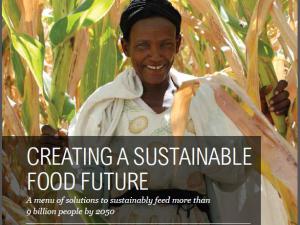World Resources Report: Creating a Sustainable Food Future

The world urgently needs to improve the way it produces and consumes food. In the coming decades, agriculture—which employs two billion people today—must provide enough food for a growing population and be an engine of inclusive economic and social development. However, the environmental impacts of agriculture are large and growing, creating risks for future food production.
Today, we use roughly one-half of the planet’s vegetated land to grow food. The amount of land used for agriculture has grown by more than 10 million hectares per year since the 1960s, and expanding croplands and pasture lands are placing increasing pressure on tropical forests. Agriculture now accounts for nearly one-quarter of global greenhouse gas emissions and 70 percent of all freshwater use. As the human population continues to grow, with billions joining the global middle class in the coming decades, these trends are set to intensify. By 2050, agriculture alone could consume 70 percent of the total allowable “budget” of greenhouse gas emissions consistent with limiting global warming to two degrees.
This is the great challenge: To adequately feed more than nine billion people by 2050, the world must close a 70 percent gap between the amount of food produced today and that needed by mid-century. At the same time, to advance sustainable development, we must close this “food gap” in ways that enhance the livelihoods of poor farmers and reduce agriculture’s impact on the environment. Failure to address the environmental impacts would hamper food production in coming decades—through land degradation, water shortages, and adverse effects from climate change.
Log in with your EU Login account to post or comment on the platform.